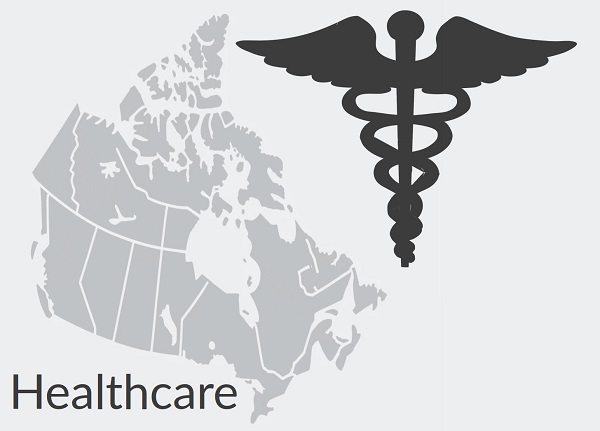Business
The Health Research Funding Scandal Costing Canadians Billions is Parading in Plain View

Why Can’t We See the Canadian Institutes for Health Research-Funded Research We Pay For?
Right off the top I should acknowledge that a lot of the research funded by the Canadian Institutes for Health Research (CIHR) is creative, rigorous, and valuable. No matter which academic category I looked at during my explorations, at least a few study titles sparked a strong “well it’s about time” reaction.
But two things dampen my enthusiasm:
- Precious few of the more than 39,000 studies funded by CIHR since 2011 are available to the public. We’re generally permitted to see no more than brief and incomplete descriptions – and sometimes not even that.
- There’s often no visible evidence that the research ever actually took place. Considering how more than $16 billion in taxpayer funds has been spent on those studies over the past 13 years, that’s not a good thing.
If you’ve been reading The Audit for a while, you know that I’ll often identify systems that appear vulnerable to abuse. As a rule though, I’m reluctant to invoke the “s” word. But here’s one place where I can think of no better description: the vacuum where CIHR compliance and enforcement should be is a national scandal.
Keep these posts coming: subscribe to The Audit.
I’ve touched on these things before. And even in that earlier post I acknowledged how:
…as a country, we have an interest in investing in industry sectors where there’s a potential for high growth and where releasing proprietary secrets can be counter productive.
So we shouldn’t expect access to the full results of every single study. But that’s surely not true for the majority of research. And there’s absolutely no reason that CIHR shouldn’t provide evidence that something (anything!) productive was actually done with our money.
Because a well-chosen example can sometimes tell the story better than huge numbers, I’ll focus on one particular study in just a moment. But for context, here are some huge numbers. What follows is an AI-powered breakdown by topic of all 39,751 research grants awarded by CIHR since 2011:
Those numbers shouldn’t be taken as anything close to authoritative. The federal government data doesn’t provide even minimal program descriptions for many of the grants it covers. And many descriptions that are there contain meaningless boilerplate text. That’s why the “Other – Uncategorized” category represents 72 percent of all award dollars.
Ok. Let’s get to our in-the-weeds-level example. In March 2016, Greta R. Bauer and Margaret L. Lawson (principal investigators) won a $1,280,540 grant to study “Transgender youth in clinical care: A pan-Canadian cohort study of medical, social and family outcomes”.
Now that looks like vital and important research. This is especially true in light of recent bans on clinical transgender care for minors in many European countries following the release of the U.K.’s Cass report. Dr. Cass found that such treatment involved unacceptable health risks when weighed against poorly defined benefits.
A website associated with the Bauer-Lawson study (transyouthcan.ca) provides a brief update:
As of December of 2021, we have completed all of our planned 2-year follow up data collection. We want to say thanks so much to all our participants who have continued to share their information with us over these past years! We have been hard at work turning data into research results.
And then things get weird. That page leads to a link to another page containing study results, but that one doesn’t load due to an internal server error.
Before we move on, I should note that I come across a LOT of research-related web pages on potentially controversial topics that suddenly go off-line or unexpectedly retire behind pay walls. Those could, of course, just be a series of unfortunate coincidences. But I’ve seen so many such coincidences that it’s beginning to look more like a pattern.
The good news is that earlier versions of those lost pages are nearly always available through the Internet Archive’s WayBackMachine. And frankly, the stuff I find in those earlier versions is often much more – educational – than whatever intentional updates would show me.
In the case of transyouthcan.ca, archived versions included a valid link to a brief PDF document addressing external stressors (which were NOT the primary focus of the original grant application). That PDF includes an interesting acknowledgment:
This project is being paid for by a grant from the Canadian Institutes of Health Research (CIHR). This study is being done by a team of gender-affirming doctors and researchers who have many years of experience doing community-based trans research. Our team includes people who are also parents of trans children, trans adults, and allied researchers with a long history of working to support trans communities.
As most of the participants appear to have financial and professional interests in the research outcome, I can’t avoid wondering whether there might be at least the appearance of bias.
In any case, that’s where the evidence trail stopped. I couldn’t find any references to study results or even to the publication of a related academic paper. And it’s not like the lead investigators lack access to journals. Greta Bauer, for example, has 79 papers listed on PubMed – but none of them related directly to this study topic.
What happened here? Did the authors just walk off with $1.2 million of taxpayer funding? Did they do the research but then change their minds about publishing when the results came in because they don’t fit a preferred narrative?
But the darker question is why no one at CIHR appears to be even mildly curious about this story – and about many thousands of others that might be out there. Who’s in charge?
Keep these posts coming: subscribe to The Audit.
Business
Fuelled by federalism—America’s economically freest states come out on top

From the Fraser Institute
Do economic rivalries between Texas and California or New York and Florida feel like yet another sign that America has become hopelessly divided? There’s a bright side to their disagreements, and a new ranking of economic freedom across the states helps explain why.
As a popular bumper sticker among economists proclaims: “I heart federalism (for the natural experiments).” In a federal system, states have wide latitude to set priorities and to choose their own strategies to achieve them. It’s messy, but informative.
New York and California, along with other states like New Mexico, have long pursued a government-centric approach to economic policy. They tax a lot. They spend a lot. Their governments employ a large fraction of the workforce and set a high minimum wage.
They aren’t socialist by any means; most property is still in private hands. Consumers, workers and businesses still make most of their own decisions. But these states control more resources than other states do through taxes and regulation, so their governments play a larger role in economic life.
At the other end of the spectrum, New Hampshire, Tennessee, Florida and South Dakota allow citizens to make more of their own economic choices, keep more of their own money, and set more of their own terms of trade and work.
They aren’t free-market utopias; they impose plenty of regulatory burdens. But they are economically freer than other states.
These two groups have, in other words, been experimenting with different approaches to economic policy. Does one approach lead to higher incomes or faster growth? Greater economic equality or more upward mobility? What about other aspects of a good society like tolerance, generosity, or life satisfaction?
For two decades now, we’ve had a handy tool to assess these questions: The Fraser Institute’s annual “Economic Freedom of North America” index uses 10 variables in three broad areas—government spending, taxation, and labor regulation—to assess the degree of economic freedom in each of the 50 states and the territory of Puerto Rico, as well as in Canadian provinces and Mexican states.
It’s an objective measurement that allows economists to take stock of federalism’s natural experiments. Independent scholars have done just that, having now conducted over 250 studies using the index. With careful statistical analyses that control for the important differences among states—possibly confounding factors such as geography, climate, and historical development—the vast majority of these studies associate greater economic freedom with greater prosperity.
In fact, freedom’s payoffs are astounding.
States with high and increasing levels of economic freedom tend to see higher incomes, more entrepreneurial activity and more net in-migration. Their people tend to experience greater income mobility, and more income growth at both the top and bottom of the income distribution. They have less poverty, less homelessness and lower levels of food insecurity. People there even seem to be more philanthropic, more tolerant and more satisfied with their lives.
New Hampshire, Tennessee, and South Dakota topped the latest edition of the report while Puerto Rico, New Mexico, and New York rounded out the bottom. New Mexico displaced New York as the least economically free state in the union for the first time in 20 years, but it had always been near the bottom.
The bigger stories are the major movers. The last 10 years’ worth of available data show South Carolina, Ohio, Wisconsin, Idaho, Iowa and Utah moving up at least 10 places. Arizona, Virginia, Nebraska, and Maryland have all slid down 10 spots.
Over that same decade, those states that were among the freest 25 per cent on average saw their populations grow nearly 18 times faster than those in the bottom 25 per cent. Statewide personal income grew nine times as fast.
Economic freedom isn’t a panacea. Nor is it the only thing that matters. Geography, culture, and even luck can influence a state’s prosperity. But while policymakers can’t move mountains or rewrite cultures, they can look at the data, heed the lessons of our federalist experiment, and permit their citizens more economic freedom.
Automotive
Politicians should be honest about environmental pros and cons of electric vehicles

From the Fraser Institute
By Annika Segelhorst and Elmira Aliakbari
According to Steven Guilbeault, former environment minister under Justin Trudeau and former member of Prime Minister Carney’s cabinet, “Switching to an electric vehicle is one of the most impactful things Canadians can do to help fight climate change.”
And the Carney government has only paused Trudeau’s electric vehicle (EV) sales mandate to conduct a “review” of the policy, despite industry pressure to scrap the policy altogether.
So clearly, according to policymakers in Ottawa, EVs are essentially “zero emission” and thus good for environment.
But is that true?
Clearly, EVs have some environmental advantages over traditional gasoline-powered vehicles. Unlike cars with engines that directly burn fossil fuels, EVs do not produce tailpipe emissions of pollutants such as nitrogen dioxide and carbon monoxide, and do not release greenhouse gases (GHGs) such as carbon dioxide. These benefits are real. But when you consider the entire lifecycle of an EV, the picture becomes much more complicated.
Unlike traditional gasoline-powered vehicles, battery-powered EVs and plug-in hybrids generate most of their GHG emissions before the vehicles roll off the assembly line. Compared with conventional gas-powered cars, EVs typically require more fossil fuel energy to manufacture, largely because to produce EVs batteries, producers require a variety of mined materials including cobalt, graphite, lithium, manganese and nickel, which all take lots of energy to extract and process. Once these raw materials are mined, processed and transported across often vast distances to manufacturing sites, they must be assembled into battery packs. Consequently, the manufacturing process of an EV—from the initial mining of materials to final assembly—produces twice the quantity of GHGs (on average) as the manufacturing process for a comparable gas-powered car.
Once an EV is on the road, its carbon footprint depends on how the electricity used to charge its battery is generated. According to a report from the Canada Energy Regulator (the federal agency responsible for overseeing oil, gas and electric utilities), in British Columbia, Manitoba, Quebec and Ontario, electricity is largely produced from low- or even zero-carbon sources such as hydro, so EVs in these provinces have a low level of “indirect” emissions.
However, in other provinces—particularly Alberta, Saskatchewan and Nova Scotia—electricity generation is more heavily reliant on fossil fuels such as coal and natural gas, so EVs produce much higher indirect emissions. And according to research from the University of Toronto, in coal-dependent U.S. states such as West Virginia, an EV can emit about 6 per cent more GHG emissions over its entire lifetime—from initial mining, manufacturing and charging to eventual disposal—than a gas-powered vehicle of the same size. This means that in regions with especially coal-dependent energy grids, EVs could impose more climate costs than benefits. Put simply, for an EV to help meaningfully reduce emissions while on the road, its electricity must come from low-carbon electricity sources—something that does not happen in certain areas of Canada and the United States.
Finally, even after an EV is off the road, it continues to produce emissions, mainly because of the battery. EV batteries contain components that are energy-intensive to extract but also notoriously challenging to recycle. While EV battery recycling technologies are still emerging, approximately 5 per cent of lithium-ion batteries, which are commonly used in EVs, are actually recycled worldwide. This means that most new EVs feature batteries with no recycled components—further weakening the environmental benefit of EVs.
So what’s the final analysis? The technology continues to evolve and therefore the calculations will continue to change. But right now, while electric vehicles clearly help reduce tailpipe emissions, they’re not necessarily “zero emission” vehicles. And after you consider the full lifecycle—manufacturing, charging, scrapping—a more accurate picture of their environmental impact comes into view.
-

 Bruce Dowbiggin8 hours ago
Bruce Dowbiggin8 hours agoWayne Gretzky’s Terrible, Awful Week.. And Soccer/ Football.
-

 espionage11 hours ago
espionage11 hours agoWestern Campuses Help Build China’s Digital Dragnet With U.S. Tax Funds, Study Warns
-

 Agriculture7 hours ago
Agriculture7 hours agoCanada’s air quality among the best in the world
-

 Business9 hours ago
Business9 hours agoCanada invests $34 million in Chinese drones now considered to be ‘high security risks’
-

 Economy10 hours ago
Economy10 hours agoAffordable housing out of reach everywhere in Canada
-

 Fraser Institute2 days ago
Fraser Institute2 days agoClaims about ‘unmarked graves’ don’t withstand scrutiny
-

 Energy2 days ago
Energy2 days agoMeet REEF — the massive new export engine Canadians have never heard of
-

 Alberta2 days ago
Alberta2 days agoHere’s why city hall should save ‘blanket rezoning’ in Calgary








